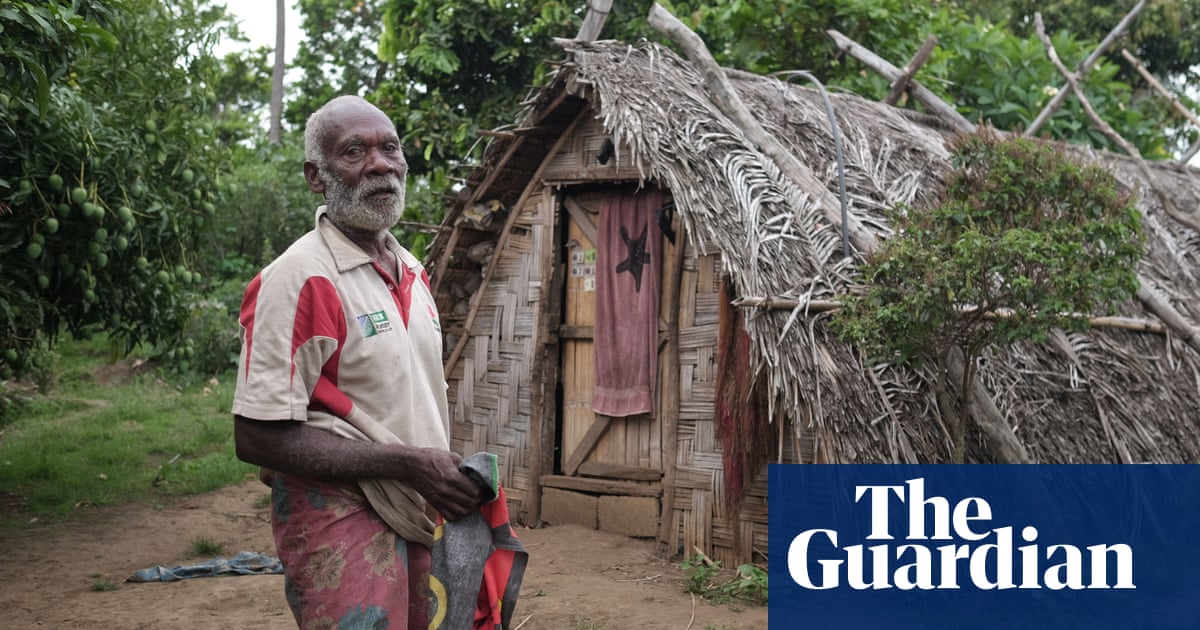Joe Natuman watches for falling leaves and new shoots on trees as a sign it’s time to garden. Then, when a southern wind begins to blow in his small village in Vanuatu’s Tafea province, he is the first to plant yams. Soon, others will follow his lead.
Like his forefathers, Natuman is a tupunus, meaning he was born into a lineage that is trained to develop an understanding of how natural forces impact agriculture and wellbeing. As a tupunus, Natuman is respected for his knowledge and ability to identify and use hundreds of plant species and special inherited stones to practise “weather magic”. He also senses winds and uses weather to help his community.
But in Vanuatu, the traditional practice is at risk of fading away. Part of the problem is a loss of local languages and the knowledge that is stored with them. Young people increasingly attend school away from their village and spend less time learning from elders. At the same time, the environment is changing as once easily-found plants become more scarce due to cattle farming, forest degradation and the impact of climate change.
Now, efforts are under way to preserve that knowledge. Botanists and academics in the US and elsewhere are working with communities in Vanuatu to study and record information about the natural diversity in Tafea province, where Natuman lives. They are also researching and documenting the linguistic diversity of the area.
“Loss of this information reduces a community’s ability to cope with the rapid pace of climate change, compromising traditional livelihoods,” say Mike Balick and Greg Plunkett, botanists leading the research in Tafea.
Keeping languages alive
Language is central to the preservation of Indigenous environmental knowledge. Vanuatu has an estimated 138 languages, some only spoken by small groups.
K David Harrison is a professor at the Centre for Environmental Intelligence at Vin University in Vietnam and specialises in endangered languages. Since 2015, Harrison has been working with botanists at the New York Botanical Garden and others to carry out nature surveys in Vanuatu, including the study of nine local languages. Some are spoken by as few as 900 people but have richly nuanced vocabularies describing the natural and spiritual worlds. Many of the concepts are difficult or impossible to translate into English, because equivalents don’t exist.
Working with local communities, Harrison has created eight talking dictionaries that have proved transformative for speakers of the mostly unwritten languages. Their work has continued in recent years, and the researchers have published studies on the links between Indigenous language and environmental knowledge and how that can be used to benefit communities.
Harrison has also been studying “wind lore” in Vanuatu. It includes the use of “wind compasses” used for wayfinding, which has been observed and documented for centuries. These are not physical objects but rather systems used for naming specific winds. A tupunus will be able to sense how the direction and strength of a wind may indicate the presence of a particular fish species, or favourable crop planting conditions.
Across the Pacific, wind lore and its role in agriculture has not been well documented, Harrison says. In 2017, he travelled to Tafea to record systems of naming and understanding winds and how communities used this knowledge.
While some elders had memorised wind lore, he says, many young people had only fragmented knowledge of what he calls “sophisticated tools for survival”.
Presley Dovo, senior conservation officer with Vanuatu’s Department of Forests, has been working with Harrison and the other researchers to document and record wind knowledge since 2015. “The winds play a vital role in providing information to the people,” Dovo says.
Increasingly inconsistent winds can cause massive disruptions to communities, infrastructure and crops, Dovo adds. He notes that Vanuatu is especially vulnerable to climate and environmental disasters, pointing to devastating back-to-back cyclones in 2023.
Harrison likens the environmental intelligence of Vanuatu to a flexible instrument, able to detect subtle changes. He says it is vital to document and preserve languages and understanding of the environment otherwise unknown to the rest of the world.
“Pacific Island nations can really be seen as a model for Indigenous futures and how Indigenous cultures are going to not only revitalise themselves but make a significant contribution to all of humanity in helping us understand what is happening with the planet.”
Back in Tafea, as the day draws to a close, Natuman sits for an interview over a mobile phone with his son, wife and several curious community members watching from behind.
When the sun starts to go down, Natuman walks to his village nakamal – a sacred gathering place for ceremonies and kava drinking. There, speaking through an interpreter, Natuman extends an invitation to come drink kava and then says goodbye. “I’m going now to talk to my ancestors.”
